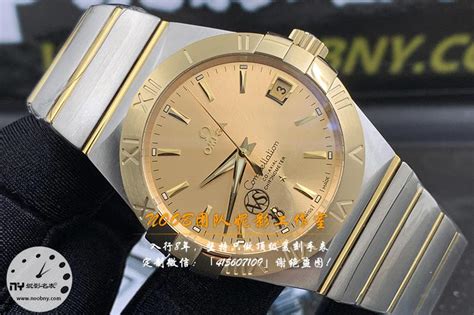制作手表的过程怎么写
Title: The Machinery Behind Watchmaking: Essential Components and Equipment
When it comes to the intricate craft of watchmaking, the machinery involved plays a crucial role in ensuring precision, accuracy, and quality. Let's delve into the essential machines utilized in the production of watches:
1. CNC Machines (Computer Numerical Control)
CNC machines are the workhorses of modern watchmaking. These automated tools are capable of executing precise cuts, drills, and milling operations on various materials such as metals, ceramics, and even sapphire crystals. In watchmaking, CNC machines are used for crafting watch cases, dials, movement components, and other intricate parts with utmost accuracy.
2. Laser Cutting and Engraving Machines
Laser technology has revolutionized the watchmaking industry, enabling intricate designs, precise cutting, and fine engraving on watch components. Laser cutting machines are employed for shaping intricate parts like hands and gears, while laser engraving adds intricate details to watch dials, case backs, and even movement components.
3. Watch Movement Assembly Machines
These specialized machines are designed for the precise assembly of watch movements, which are the heart of any timepiece. They assist watchmakers in meticulously piecing together hundreds of tiny components, ensuring the movement functions smoothly and accurately. These machines often include automated processes for installing gears, jewels, springs, and escapements.
4. Cleaning and Finishing Equipment
Cleanliness and aesthetics are paramount in watchmaking. Cleaning machines utilize ultrasonic technology or specialized solvents to remove dirt, oils, and debris from watch components without causing damage. Finishing equipment such as polishing and buffing machines are then employed to achieve the desired surface texture and shine on metal parts like cases, bezels, and bracelets.
5. Testing and Quality Control Systems
Before a watch leaves the factory, it undergoes rigorous testing to ensure it meets stringent quality standards. Testing machines simulate various conditions such as temperature, pressure, and magnetic fields to assess the watch's accuracy, water resistance, and durability. Additionally, optical inspection systems are utilized to detect any defects or imperfections in the finished timepieces.
6. Watch Strap and Bracelet Making Machines
While often overlooked, the straps and bracelets of a watch require specialized machinery for production. Machines for cutting, stitching, and embossing leather straps, as well as machines for forming and assembling metal bracelets, are essential for completing the final look and feel of a timepiece.

7. Packaging and Labeling Equipment
Once the watches are ready for distribution, packaging and labeling machines come into play. These machines automate the process of placing watches into their respective boxes or cases, applying protective films or stickers, and affixing labels with essential information such as model numbers, serial numbers, and branding details.
In conclusion, the machinery used in watchmaking encompasses a diverse range of specialized tools and equipment, each serving a unique purpose in the creation of highquality timepieces. From precision machining to meticulous assembly and testing, these machines are the backbone of the watchmaking industry, ensuring that every watch meets the exacting standards of craftsmanship and performance.











